The artists of HSC
By Jan Jarvis
Think the soul of an artist and the mind of a scientist cannot co-exist in the same body?
Think again.
Leonardo da Vinci straddled both worlds. For Salvador Dali, quantum mechanics was as captivating as the canvas.
Psychologists say art and science share the same basic human need to understand the world around us. Whether that translates into a painting or a lifesaving drug just depends.
At The University of North Texas Health Science Center at Fort Worth, we have plenty of people who spend their days conducting research, caring for patients, managing data and keeping the campus running. But in their free time, they let the right side of their brain run wild.
The results are watercolor paintings, photographs and more from the gifted few featured here.
Susan Harlin, photographer
It was 10 degrees below in Bryce Canyon National Park as Susan Harlin stomped through the snow carrying more than 35 pounds of camera equipment on her back.
What could she possibly be looking for?
“You’re looking for something that you’re willing to spend several hours in a dark room with,” said Harlin, a former compliance manager at the Health Science Center.
That could be anything. A frozen river, a bent tree branch, the way light hits a weathered shack. Out of 100 shots, she might find only five that are worth bringing to life in the dark room.
As one of a shrinking number of black-and-white nature photographers in the country, Harlin creates large images the old-fashioned way, using vintage cameras. She loves the moment when she can pull the cloth over her head and escape.
“The black cloth separates me from the surrounding world,” she said. “It’s a time when I can be in my own world.”
The vintage cameras allows her to capture images in a way digital cameras never could.
“With a point and shoot, you see something the way it looks,” she said. “But when you look through the ground glass of a larger lens, you see more details, and it forces you to slow down and enjoy what you are doing.”
Harlin has been doing just that since 1997.
The daughter of an artist, she dabbled in photography growing up and later snapped pictures at horse shows. While attending a photography club meeting in 1997, she got hooked on vintage cameras. It was then that she met her husband, J.B.
The couple’s passion for large black-and-white photos has taken them around the country, including to the winter wonderlands of Utah’s Zion or Bryce Canyon national parks.
“It will be in the single digits, but it’s a different kind of cold,” she said. “You just gotta love it.”
Iok-Hou Pang, watercolor artist
Dr. Iok-Hou Pang signs his artwork with a Chinese chop or seal that is as unique as the watercolor paintings he creates.
He keeps his stone chops in ornate boxes and only uses them on his Asian theme-inspired paintings, such as florals and landscapes. For the others, a cathedral in France, for example, he signs his name.
The two signatures contrast dramatically with each other, not unlike the artist.
Dr. Pang is a scientist who never tires of peering into microscopes in search of a cure for glaucoma. He is also an artist, who can just as easily get lost in the minutest details of a flower.
What the two worlds have in common is they feed his passion for life.
“Art is just like science for me,” said Dr. Pang, former Professor and Founding Chair of Pharmaceutical Sciences. “It requires careful observation, dutiful reporting and technical problem solving in between.”
Although he has never taken a formal lesson, Dr. Pang’s detailed watercolors have won him much recognition.
“I always liked to doodle as a kid, but it wasn’t until I became an empty nester that I started sketching again, which eventually expanded into realistic watercolor paintings,” he said. “I entered my first painting competition and unexpectedly won first prize.”
He has been entering art shows worldwide ever since. Most recently, his painting “Grace” was among 40 works selected to represent the U.S. in Italy at one of the most well-regarded international watercolor shows.
He finds inspiration everywhere: a statue in China, a cathedral in Strasbourg or a garden in Honolulu.
“Painting is always something that moves me,” he said. “It’s engaging; so engaging that I can paint all day without feeling hungry.”
But make no mistake, Dr. Pang might have the heart of an artist, but he still has the mind of a scientist. He is an internationally known researcher.
Realistic watercolor painting is a lot like research, he said. It requires careful planning, attention to detail and time. A painting can take 60 or more hours.
“I like the intellectual challenge in both cases,” he said.
Jerry Emerson, acrylic painter
Painting – specifically with oils – became a part of Jerry Emerson’s life early.
“My parents wanted me to get involved in sports, but when I tried baseball I was terrible at it,” he said. “They realized then that I was not going to be an athlete.”
He was, however, going to be an artist.
At age 9, he started taking art classes, discovering oils and landscapes in his Alabama hometown. He switched to pencil drawings and acrylics in high school. Then while at college in Arkansas, he put art aside to pursue a career in music. He was planning to move to Las Angeles and become a professional musician when he got seriously ill. God, he realized, had other plans.
“I picked up a guitar, and it was like my hands knew exactly what to do,” he said. “I sat down at the piano and started playing.”
After hearing him perform, Baptist State University officials offered him a full scholarship. Music remained a part of his life when he became a pastor and began leading worship services at community churches.
But his passion for painting never faded.
In 2013, he started working at HSC as the manager of Custodial Services. The job gave him an opportunity to express his creativity in carpentry. He decided it was time to return to painting in his free time.
The chance to pursue his creative spirit is what keeps Emerson coming back to his paintbrush. He prefers painting still life and nature.
“It relaxes me and it’s enjoyable,” he said. “It’s peaceful and can take my mind off the troubles of the day.”
Shaoqing He, photographer
Shaoqing He was stressed.
He was spending long, tedious hours working on his doctorate in pharmacology. He knew he needed stress relief.
The eye researcher had to look no further than the Botanical Gardens.
“It became one of my very favorite places,” He said. “It’s the reason I started doing photography.”
Flash forward 15 years, and He is an Assistant Professor of Pharmacology & Neuroscience at HSC. Today, photography is not so much about stress relief as it is about pleasure.
His pursuit of birds in flight has taken him across the country, snapping snow geese, cranes and waterfowl. Hummingbirds are his favorites.
“They’re so small, hard to find and difficult to photograph,” he said. “They’re also very beautiful and change colors.”
As a researcher, his thirst for scientific knowledge is matched only by his drive to understand the creatures he captures in photos.
“To photograph birds, you need to know a lot about them,” he said. “You need to be able to recognize their songs, so you can find them. You need to know how they live and their habitat.”
Hummingbirds, for example, migrate to Mexico every winter, a fact that fascinates He.
“They are such tiny birds, but just imagine them flying thousands of miles to migrate each year,” he said.
He travels just as far each year to photograph birds in Florida, New Mexico and other places. Beyond birds, He also photographs wildlife such as bears, seals and moose.
Being an eye researcher, He has an even greater appreciation for what he sees.
“The camera is limited in what it can do,” he said. “But the amazing thing about our eyes is they they can see everything.”
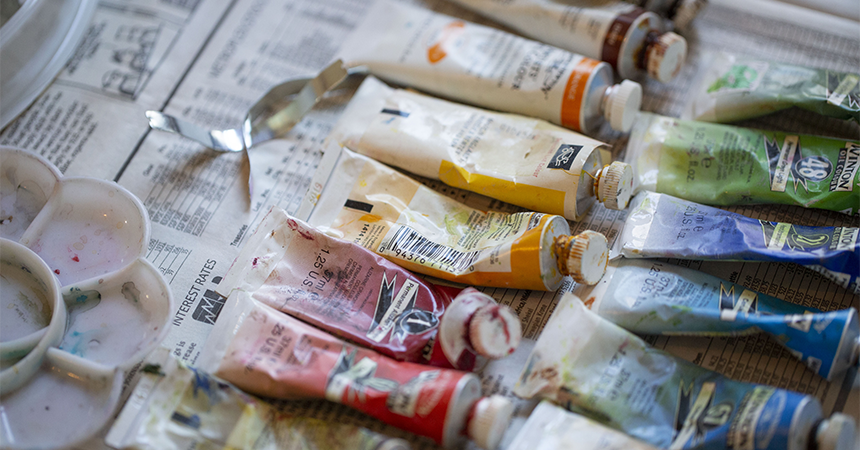
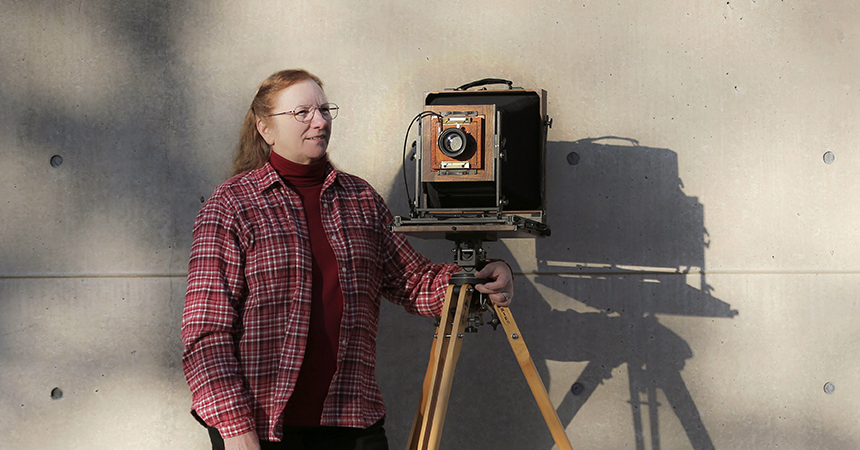
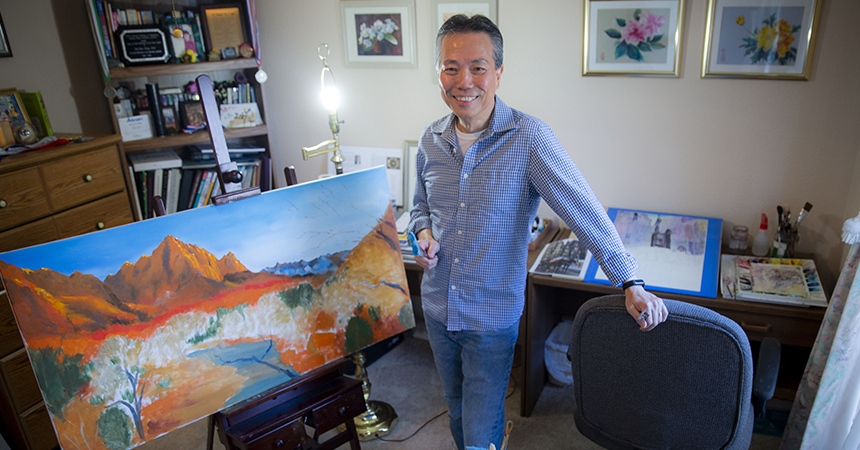
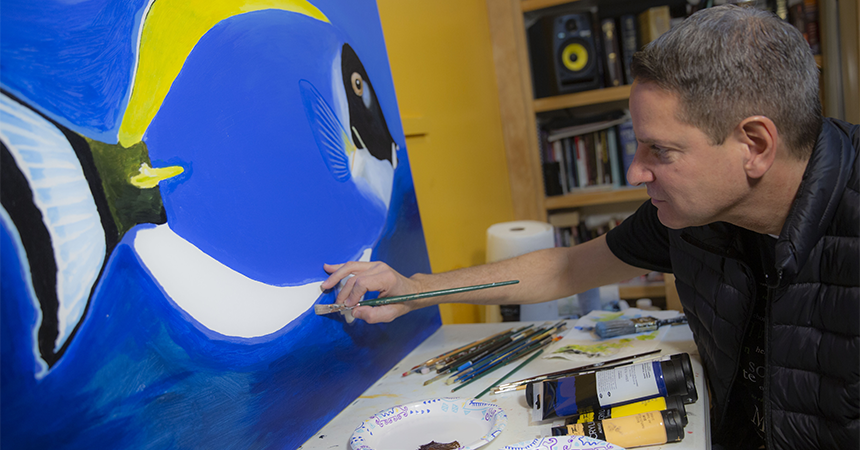
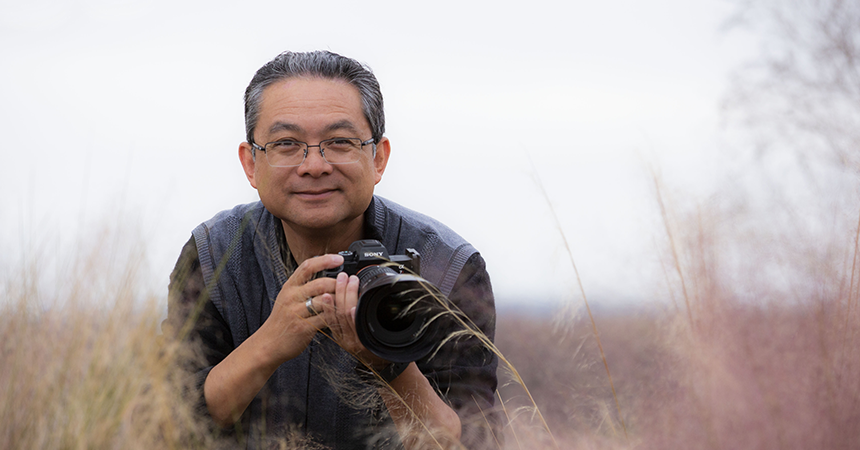
![Uyen Sa Nguyen Scaled[58]](https://www.unthsc.edu/newsroom/wp-content/uploads/sites/16/Uyen-Sa-Nguyen-scaled58-145x175.jpg)
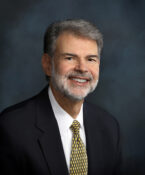
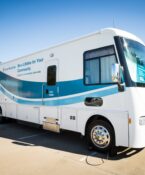
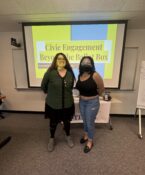

Social media